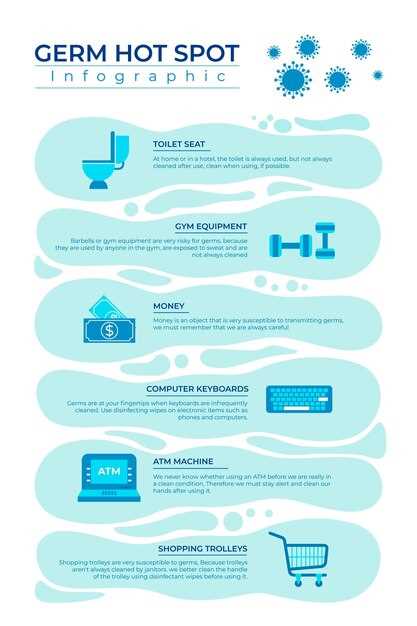
Product Name: Atorvastatin Calcium
Chemical Formula: C66H68CaF2N4O10
Description: Atorvastatin Calcium is a white to off-white crystalline powder that is insoluble in water and freely soluble in chloroform, methanol, and ethanol.
Usage: Atorvastatin Calcium is primarily used as a medication to lower cholesterol levels and prevent cardiovascular disease.
Hazards Identification:
Eye Contact: May cause irritation. Flush eyes with plenty of water for at least 15 minutes.
Skin Contact: May cause irritation or sensitization. Wash affected area with soap and water. Seek medical attention if irritation persists.
Ingestion: May cause abdominal pain, nausea, vomiting, and diarrhea. Seek immediate medical attention.
Inhalation: May cause respiratory irritation. Remove to fresh air. If breathing difficulties persist, seek medical attention.
First Aid Measures:
Eyes: Flush with water for at least 15 minutes. Seek medical attention if irritation persists.
Skin: Wash affected area with soap and water. Seek medical attention if irritation persists.
Ingestion: Do not induce vomiting. Seek immediate medical attention.
Inhalation: Remove to fresh air. If breathing difficulties persist, seek medical attention.
Fire Fighting Measures:
Extinguishing Media: Use carbon dioxide, dry chemical powder, or appropriate foam.
Fire Hazards: Atorvastatin Calcium is not flammable.
Fire Fighting Instructions: Avoid breathing smoke. Wear self-contained breathing apparatus.
Product Information
The safety data sheet provides detailed information about the product atorvastatin calcium. It includes important data regarding the chemical composition, physical and chemical properties, hazard identification, first aid measures, handling, and storage instructions.
Atorvastatin calcium is a medication used to lower cholesterol levels in the blood and reduce the risk of heart-related complications. It belongs to the class of drugs called statins, which work by blocking the enzyme responsible for cholesterol production in the liver.
This safety data sheet contains important information for healthcare professionals, pharmacists, and consumers to ensure safe use of atorvastatin calcium. It provides information on how to handle the product, store it properly, and take necessary precautions to avoid any potential hazards or risks associated with its use.
It is important to read the safety data sheet before using atorvastatin calcium to understand the potential hazards and precautions to be taken. It also provides information on first aid measures in case of accidental exposure or ingestion.
Additionally, the safety data sheet includes information on the physical and chemical properties of atorvastatin calcium, such as its appearance, odor, melting point, boiling point, solubility, and stability. This information is useful for handling and storing the product appropriately.
In summary, the safety data sheet provides comprehensive information about atorvastatin calcium, allowing healthcare professionals, pharmacists, and consumers to use the product safely and effectively.
Product Information
Here is some important information about atorvastatin calcium:
Physical Properties
- Appearance: White to off-white crystalline powder
- Solubility: Sparingly soluble in water, freely soluble in methanol, and soluble in ethanol
- Odor: Odorless
- Molecular Formula: C33H34FN2O5
- Molecular Weight: 558.64 g/mol
Chemical Properties
- Chemical Name: (3R,5R)-7-[2-(4-Fluorophenyl)-3-phenyl-4-(phenylcarbamoyl)-5-propan-2-ylpyrrol-1-yl]-3,5-dihydroxyheptanoic acid calcium salt (2:1)
- IUPAC Name: calcium bis(2-(4-fluorophenyl)-5-(1-methylethyl)-3-phenyl-4-(phenylcarbamoyl)pyrrol-1-yl)-3,5-dihydroxyheptanoate
- CAS Number: 134523-03-8
These properties help to identify the physical and chemical characteristics of atorvastatin calcium, which is important for understanding its behavior and interactions.
Hazard Identification

It is important to understand the potential hazards associated with atorvastatin calcium in order to ensure safe handling and use of the product. The following information provides an overview of the hazards and associated precautionary measures.
Physical Hazards
Atorvastatin calcium is a solid substance and does not pose any physical hazards such as flammability or explosiveness.
Health Hazards
Atorvastatin calcium may cause irritation to the skin, eyes, and respiratory system. It is important to avoid direct contact with the product and use appropriate personal protective equipment (PPE) such as gloves and safety goggles when handling.
Environmental Hazards
Atorvastatin calcium is not expected to have any significant adverse effects on the environment.
| Hazard Class | Hazard Category | Hazard Statement |
|---|---|---|
| Acute Toxicity | Oral, Dermal, Inhalation | Harmful if swallowed, in contact with skin, or if inhaled |
| Skin Irritation | Category 2 | Causes skin irritation |
| Eye Irritation | Category 2 | Causes serious eye irritation |
| Respiratory Sensitization | Category 1 | May cause respiratory irritation |
| Target Organ Effects | Category 2 | May cause damage to organs through prolonged or repeated exposure |
It is important to follow good hygiene practices and safety procedures when handling atorvastatin calcium. Any spills or leaks should be cleaned up immediately and the product should be stored in a secure and well-ventilated area away from incompatible materials.
Hazard Identification
When handling atorvastatin calcium, it is important to be aware of the potential hazards it may pose. This section will outline the main hazards associated with the substance.
Health Hazards:
Atorvastatin calcium may be harmful if swallowed, inhaled, or comes into contact with the skin or eyes. It can cause irritation and redness or other adverse skin reactions. Ingesting or inhaling the substance may lead to respiratory irritation, coughing, and difficulty breathing.
Environmental Hazards:
Atorvastatin calcium can be hazardous to the environment if released or disposed of improperly. It may contaminate soil, surface water, or groundwater and have harmful effects on aquatic life.
It is important to take the necessary precautions when handling atorvastatin calcium and follow proper safety procedures to minimize the risks associated with its use. This includes wearing protective clothing and gloves, ensuring adequate ventilation, and avoiding contact with skin, eyes, and clothing.
In case of accidental exposure, it is important to seek medical attention immediately and provide the healthcare professional with any relevant information about the substance.
By understanding and addressing the hazards associated with atorvastatin calcium, you can ensure the safe and responsible handling of this substance.
First Aid Measures
In the event of accidental ingestion of atorvastatin calcium, seek medical attention immediately. Do not induce vomiting unless instructed by a healthcare professional. If the person is conscious and able to swallow, give them a small glass of water or milk to drink.
If atorvastatin calcium comes into contact with the eyes, flush them immediately with plenty of water for 15 minutes. Remove contact lenses, if applicable, and continue rinsing.
If atorvastatin calcium comes into contact with the skin, remove contaminated clothing and wash the affected area thoroughly with soap and water. If irritation or redness develops, seek medical advice.
If inhaled, remove the person to fresh air. In case of respiratory discomfort or if breathing becomes difficult, seek immediate medical attention.
Notes to Physicians
Treatment should be based on the symptoms and clinical condition of the patient. It is important to consider that atorvastatin calcium is a potent medication.
Emergency Phone Numbers
In case of emergency, contact your local poison control center or call emergency services.
Handling and Storage
Proper handling and storage of atorvastatin calcium are essential to ensure safety and maintain product integrity. Follow the guidelines below:
Handling

When handling atorvastatin calcium, it is important to take appropriate precautions to minimize the risk of exposure. Use personal protective equipment (PPE) such as gloves, goggles, and a lab coat to protect against contact with the product.
Avoid inhalation of dust or vapors by working in a well-ventilated area or using local exhaust ventilation. Use tools and equipment that are suitable for handling chemicals, and avoid using materials that may react with atorvastatin calcium.
Take care to prevent cross-contamination by ensuring separate storage and handling of atorvastatin calcium from other materials, especially those that are incompatible or reactive.
Storage
Store atorvastatin calcium in a cool, dry, and well-ventilated area. Keep containers tightly closed and properly labeled to prevent accidental spills or exposure. Ensure that storage conditions comply with local regulations and requirements.
Avoid exposure to direct sunlight, heat, and sources of ignition, as these may lead to degradation of the product and pose a safety risk. Keep atorvastatin calcium away from oxidizing agents and incompatible substances.
Do not store atorvastatin calcium with food, beverages, or animal feed. Keep it out of reach of children and unauthorized personnel.
Ensure proper inventory management, including first-in, first-out (FIFO) rotation, to minimize the chances of using expired or degraded product. Maintain accurate records of storage and handling activities for quality control and regulatory compliance purposes.
For more detailed information on handling and storage, refer to the Material Safety Data Sheet (MSDS) and Product Information provided by the manufacturer.
